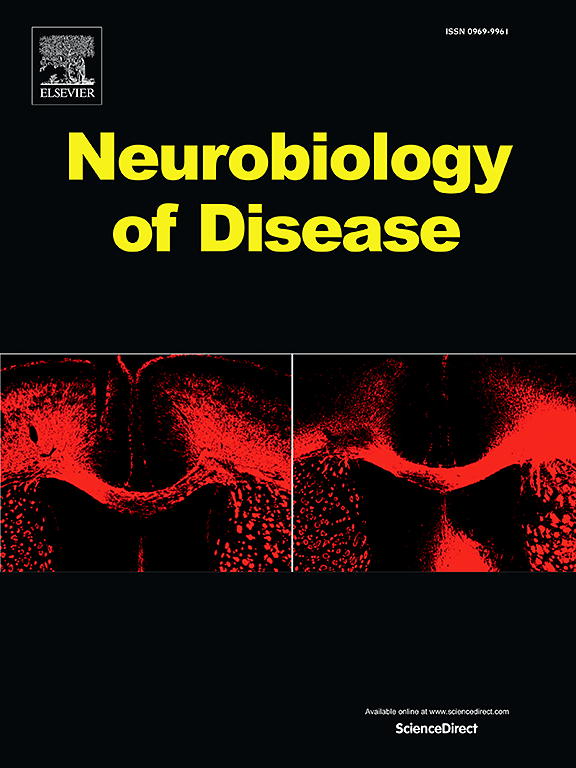家族性偏瘫偏头痛 2 型新型小鼠皮层下的自发扩散性去极化。
IF 5.1
2区 医学
Q1 NEUROSCIENCES
引用次数: 0
摘要
由于缺乏自发发生的疾病模型,人们对扩散性去极化(SD)的启动机制研究不足。我们在这里展示了一种新型家族性偏瘫偏头痛2型(FHM2)小鼠模型,该模型表达了Na+/K+腺苷三磷酸酶泵(Atp1a2T345A)α2亚基的错义T345A突变。高通量 Atp1a2T345A 小鼠表现出有规律的自发 SD,这种 SD 表现出昼夜节律,通常源自海马。杂合子 Atp1a2T345A 小鼠很少表现出自发 SD,而且在电诱导 SD 时,仅表现出传播速度增加,而同合子则表现出传播速度增加和阈值降低。值得注意的是,尽管海马兴奋性过高,Atp1a2T345A小鼠的自发性SD只在极少数情况下与癫痫行为有关,而且在点燃过程中癫痫发作表现减少。自发性SD可通过调节持续性钠电流来预防。海马SD在NMDA受体拮抗剂存在的情况下发生,但这些事件并没有到达皮层,这表明SD的启动和传播在该模型中依赖于不同的机制。本文章由计算机程序翻译,如有差异,请以英文原文为准。
Spontaneous spreading depolarizations originate subcortically in a novel mouse model of familial hemiplegic migraine type 2
The mechanisms of initiation of spreading depolarization (SD) are understudied due to a paucity of disease models with spontaneously occurring events. We here present a novel mouse model of familial hemiplegic migraine type 2 (FHM2), expressing the missense T345A-mutated α2 subunit of the Na+/K+ adenosine triphosphatase pump (Atp1a2T345A). Homozygous Atp1a2T345A mice showed regular spontaneous SDs that exhibit a diurnal rhythm and typically originate from the hippocampus. Heterozygous Atp1a2T345A mice rarely exhibited spontaneous SDs and, for electrically induced SDs, only showed an increased propagation speed, whereas homozygotes showed both increased propagation and decreased threshold. Remarkably, despite hippocampal hyperexcitability, spontaneous SDs in Atp1a2T345A mice were only rarely associated with epileptic behavior, and seizure expression during kindling was decreased. Spontaneous SDs could be prevented by modulation of persistent sodium currents. Hippocampal SDs occurred in the presence of an NMDA-receptor antagonist, but these events did not reach the cortex, suggesting that initiation and propagation of SD depend on different mechanisms in this model.
求助全文
通过发布文献求助,成功后即可免费获取论文全文。
去求助
来源期刊

Neurobiology of Disease
医学-神经科学
CiteScore
11.20
自引率
3.30%
发文量
270
审稿时长
76 days
期刊介绍:
Neurobiology of Disease is a major international journal at the interface between basic and clinical neuroscience. The journal provides a forum for the publication of top quality research papers on: molecular and cellular definitions of disease mechanisms, the neural systems and underpinning behavioral disorders, the genetics of inherited neurological and psychiatric diseases, nervous system aging, and findings relevant to the development of new therapies.
 求助内容:
求助内容: 应助结果提醒方式:
应助结果提醒方式:


